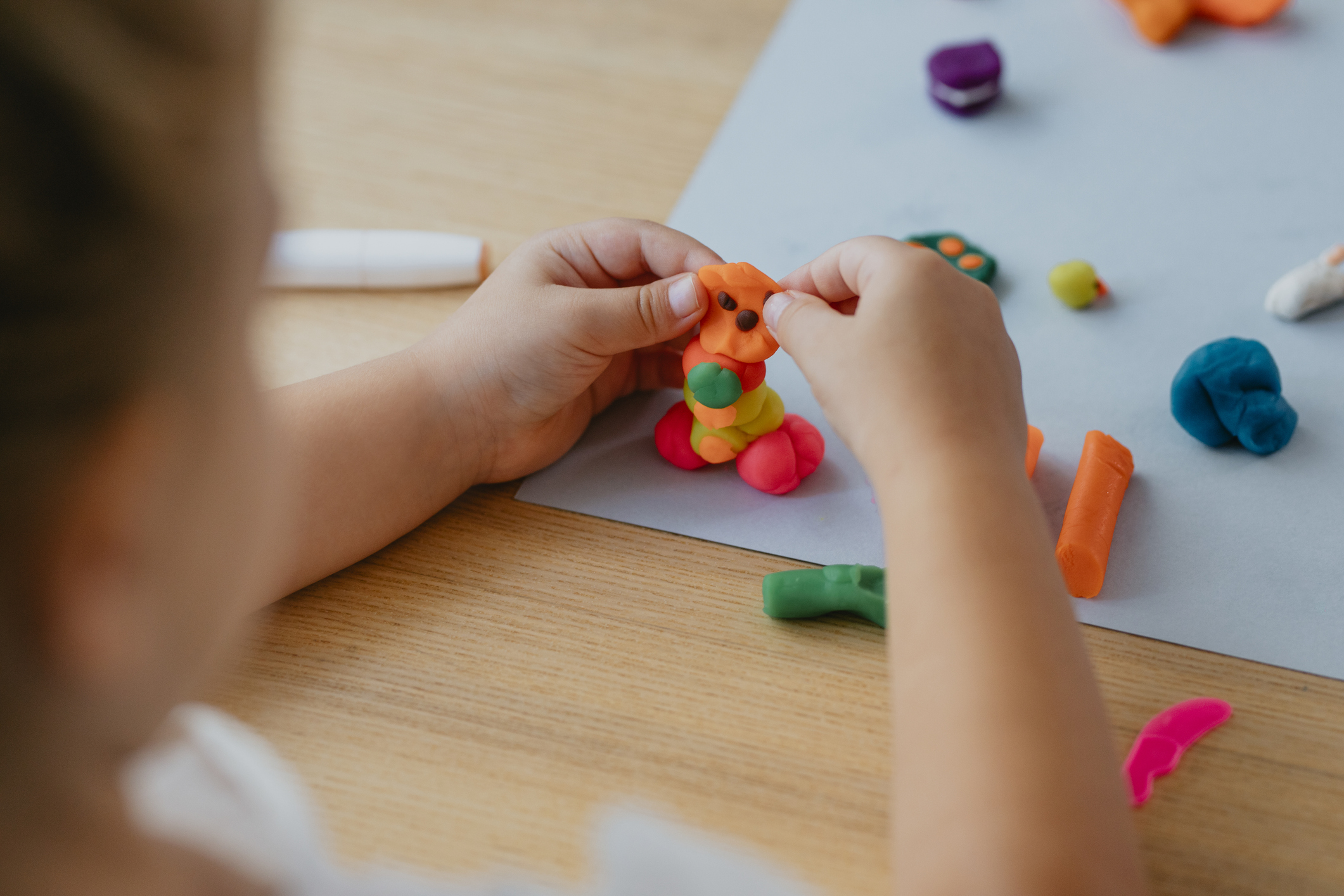
The Big Deal with Small Muscles: Fine Motor Skills for Kids
By Larysa Spisic, MS, OTR/L, Director of Related Services
What are Fine Motor Skills:
Fine motor skills are activities that use the small muscles in our hands to produce precise movements. You need fine motor skills to be able to complete self-care tasks, such as brushing your teeth or managing fasteners on clothing, as well as for school activities, such as coloring or writing. Fine motor skills are also needed during play, such as when building with blocks or Legos, putting together puzzles, or even playing video games.
Fine motor skills progress following a developmental sequence, and are often documented through developmental milestones, or skills that are achieved as a child develops. The typical pattern of development occurs from the trunk, or core, out to the extremities. Because of this, children tend to develop gross motor skills before fine motor skills. Postural control in the shoulder girdle, trunk, and hip muscles, therefore, is a prerequisite for more refined motor control in the hands, wrist, and fingers.
Why are Fine Motor Skills Important in the Classroom?
- Learning occurs through touch and manipulation
- To complete activities of daily living (i.e. self-help skills)
- To use tools with precision and dexterity (i.e. crayons, pencils, scissors, etc.)
- To complete academic tasks in a timely and efficient manner (i.e. writing or typing with speed and accuracy)
Developmental Norms and Red Flags
- Difficulty opening containers, packages
- Immature grasp patterns
- Limited in-hand manipulation skills
- Lack of consistent hand dominance
- Whole hand or whole arm movements
- Poor writing legibility
- Difficulty with fasteners
- Inability to form simple shapes
- Inability to color within the lines and draw recognizable pictures
- Not keeping up with peers in gym class
- Walks on toes all the time
- Poor ability to maintain proper sitting position
- Easily distracted by surrounding visual stimuli
- Difficulty focusing on fine motor and visual motor activities, worksheets, etc.
- Difficulty identifying letters and words
What can we do to facilitate Fine Motor Skill development in the Classroom?
Classroom Strategies: Postural Control
- Write, read, or play while in a prone (on stomach) position
- Imaginary play with animal walks
- Yoga
- Write or paint on a vertical surface
- Wall or chair push ups
- Pump a swing
- Adjust the chair and desk height if needed
- Try a seat cushion to help with posture
- Use a binder or slant board
Classroom Strategies: Strength and Manipulation:
- Play with playdough or theraputty
- Hide objects in playdough or theraputty
- Build with blocks or legos
- String beads
- Shake and roll dice in one hand – good for games or math activities
- Pick up 2 or more objects, retain in hand, use thumb and index finger to pick up more
- Build with toothpicks and marshmallows
- Peel and/or place stickers
- Tear paper to make a collage
- Pick up objects with tongs or tweezers
- Move a pencil up and down in one hand
- Turning pencil in hand from lead to eraser
- Unscrew lids on small water bottles
- Storing classroom materials in Ziploc bags or twist tie bags
Classroom Strategies: Improving Grasp
- Use small pencil or crayon pieces
- Use thick writing or coloring tools
- Hold a small bead between ring and little finger and palm
- Put dots on pencil for visual cue
- Put dot on distal thumb joint to prompt student to “poke out the dot”
- Write on vertical or inclined surface
- Stick a pencil or crayon through the hole of a plastic golf ball
- Try different pencil grips
- Activities to develop grasp: squirt gun, spray bottle, cutting with scissors, games using tweezers or tongs
Classroom Strategies: Cutting
- Practice cutting Play Doh, Gak, and Silly Putty
- Cut ends off licorice to make straws
- Cut tops off of fruit snacks, or cut up pieces of string cheese
- Practice snipping – cut straws and use the piece to string like beads
- Tape a Hershey kiss to the end of a long “road”
- Pretend scissors are alligators taking big bites of the paper
- Cut up magazines to make puzzles
- Cut heavy paper, file folders, poster board, subscription cards
- Place a rubber band around the blades close to the loops to slow down cutting
- Use adapted scissors
Also incorporate opportunities to…
- Increase ocular motor control
- Visual pursuits (smooth eye movements) & saccades (jumping movements)
- Improve visual motor integration & visual perceptual skills
- Use puzzles, legos, blocks, coloring, mazes, hidden pictures, tracing activities
- Improve integration of sensory processing
- Introduce body awareness activities (draw a person), tactile, proprioception, and kinesthetic awareness
- Increase praxis skills
- Spatial activities, sequencing, bilateral coordination
When to Refer to OT for Fine Motor Concerns
- Lack of hand dominance
- Poor ability to cross midline
- Problems with pencil grasp and in-hand manipulation that aren’t corrected by teacher strategies
- Inability to use us both hands in an activity
- Poor ability coordinating eyes and hands
- Persistent directional and spatial difficulties
- Difficulty copying from the board
- Poor ability to maintain a proper sitting position
- Illegible handwriting and difficulty recognizing errors despite sufficient instruction
Our Pencil Power and Fine Motor Bootkamp are designed specifically for these purposes.



